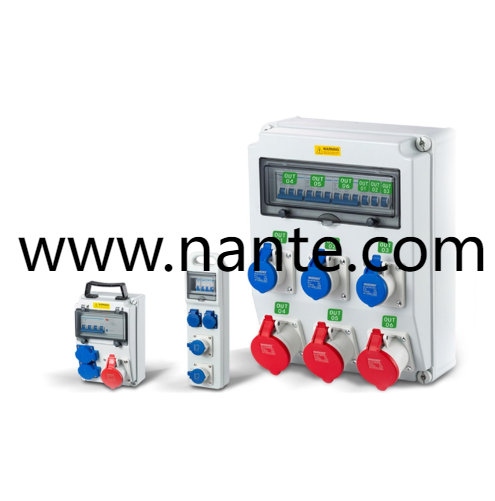Industrial Cryo Refrigeration Systems: US Market Potential

Industrial cryo refrigeration systems: Provide cooling solutions for research and manufacturing.
Industrial cryo refrigeration systems in the US are active cooling machinery designed to continuously remove heat and maintain ultra-low temperatures, often defined as below the freezing point of water and sometimes below a specific industry benchmark. These systems are the technological backbone for numerous high-value processes, fundamentally differing from passive cryogenic storage tanks which rely solely on insulation. Their complexity lies in the precise control of thermodynamic cycles to achieve and sustain these extreme cold environments efficiently.
Fundamental Operating Cycles and Components
The heart of an industrial cryo refrigeration system is the refrigeration cycle, which utilizes a working fluid (or refrigerant) to absorb heat from the process being cooled and reject it to the environment. The choice of cycle depends heavily on the target temperature range:
Vapor-Compression and Cascade Systems: For the upper end of the cryogenic scale, complex cascade refrigeration systems are often employed. These link two or more separate vapor-compression loops, using the cooling from a higher-temperature cycle to cool the condenser of a lower-temperature cycle. This step-down approach is necessary because no single refrigerant is efficient or suitable across the entire vast temperature range required.
Gas Cycle Refrigerators (Reverse Brayton Cycle): These systems use a gas, often the process gas itself (like nitrogen or helium), as the working fluid. The gas is compressed, pre-cooled, and then passed through an expander (often a high-speed turbine or piston). The rapid expansion of the gas causes a dramatic drop in temperature, which is the mechanism for generating the deep cold required for large-scale gas liquefaction and hydrocarbon processing. The expander is the critical component where work is extracted and cooling is generated.
Joule-Thomson (JT) Systems and Specialized Cryocoolers: For the coldest applications, such as in scientific research and certain electronics manufacturing, the Joule-Thomson effect is utilized. This involves forcing a high-pressure gas through a small restriction, resulting in a temperature drop. For specialized, smaller cooling applications, mechanical cryocoolers like Gifford-McMahon (GM) or Pulse Tube coolers are used. These devices use displacers or acoustic waves to cycle the gas, providing reliable, maintenance-friendly cooling for superconducting magnets or sensitive sensors.
Applications Across the US Industrial Landscape
Industrial cryo refrigeration systems are not confined to a single sector but are foundational to several major US industries:
Industrial Gas Production: The entire Air Separation Unit (ASU) industry relies on cryo refrigeration systems to cool and liquefy atmospheric air before it is distilled into pure nitrogen, oxygen, and argon. These are among the largest and most energy-intensive cryo plants.
Energy and Hydrocarbon Processing: In the natural gas industry, complex refrigeration systems are critical for the liquefaction of natural gas (LNG) for export and for the separation and recovery of Natural Gas Liquids (NGLs), which are valuable components separated from the raw gas stream.
Biotechnology and Healthcare: Cryocoolers and refrigeration loops maintain the ultra-low temperatures necessary for Magnetic Resonance Imaging (MRI) magnets and for preserving biological materials in biobanks, requiring systems of extreme reliability.
Aerospace and Defense: Specialized, often compact and high-performance, cryocoolers are essential for cooling infrared sensors on satellites and guidance systems to minimize thermal noise and maximize sensitivity.
Operational and Environmental Considerations
The US market is continually driven by demands for greater energy efficiency and environmental compliance. The move towards using natural refrigerants like carbon dioxide, ammonia, and hydrocarbons is a major trend to reduce the industry’s reliance on synthetic refrigerants with high Global Warming Potential (GWP). Operationally, the systems are complex and feature extensive control and monitoring platforms to maintain tight temperature stability. The reliability of rotating equipment, such as centrifugal compressors and turboexpanders, is paramount, as a failure can halt a large industrial process, making preventative maintenance a core operational focus.
FAQs on Industrial Cryo Refrigeration Systems
What is the distinction between a passive storage tank and an active cryo refrigeration system?
A passive storage tank uses insulation and a vacuum to slow down heat transfer, managing temperature but not actively lowering it. An active cryo refrigeration system is a machine that uses thermodynamic cycles (like compression and expansion) and a working fluid to continuously remove heat and maintain a set, ultra-low temperature for an ongoing process.
Why can't a single, standard refrigeration cycle be used to reach all cryogenic temperatures?
A single cycle is inefficient or impractical because the properties of refrigerants change dramatically at different temperatures. To bridge the massive temperature gap, engineers use cascade systems that link multiple, increasingly colder cycles together, or gas cycle systems, where the gas itself becomes the cooling medium.
What role do turboexpanders play in large industrial cryo refrigeration?
Turboexpanders are a central component of large-scale gas cycle refrigeration. They extract energy from a high-pressure gas by forcing it through a turbine, causing the gas to perform work and resulting in a significant and rapid drop in temperature (cooling),







